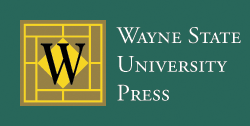Abstract
This essay draws on my own discoveries and current practices as an American theatre director and academic who has been teaching theatre and performance in Aotearoa New Zealand for almost two decades. Here, I share in some depth my approach to two plays by prominent Māori playwright, Hone Kouka: Nga Tangata Toa and Waiora. These remarkable theatrical texts are deliberately modelled on Ibsenian realism while also representing the first, still most powerful experiments in bringing Māori ritual and traditional performance onto post-colonial New Zealand stages.
New Zealand theatre and can serve as a platform for explorations of equivalent issues in the theatre and performance of other cultures, in particular the USA. For students (and teachers) who are not of this place, the attractions of encountering Māori theatre can be doubled: the sense of distance and difference provides room for thoughtful, critical analysis of indigenous playtexts in a distinctive, bicultural context in a way that is often not so possible on one’s home turf, and creating points of comparison between theatres and cultures allows for deeper reflections on the nature of indigenous theatre and performance more widely.
Through close readings of New Zealand drama and the way its theatricality is engaged with the social realities of life here in the South Pacific, we have an opportunity to teach students how to think about the theatre more widely, to question their own theatre and performance practices and to seek new ways of representing their own social realities as they become the next generation of theatre-makers.
Recommended Citation
Mazer, Sharon
(2014)
"Here As Elsewhere: Thinking Theatrically/Acting Locally,"
Antipodes: Vol. 28:
Iss.
1, Article 9.
Available at:
https://digitalcommons.wayne.edu/antipodes/vol28/iss1/9
